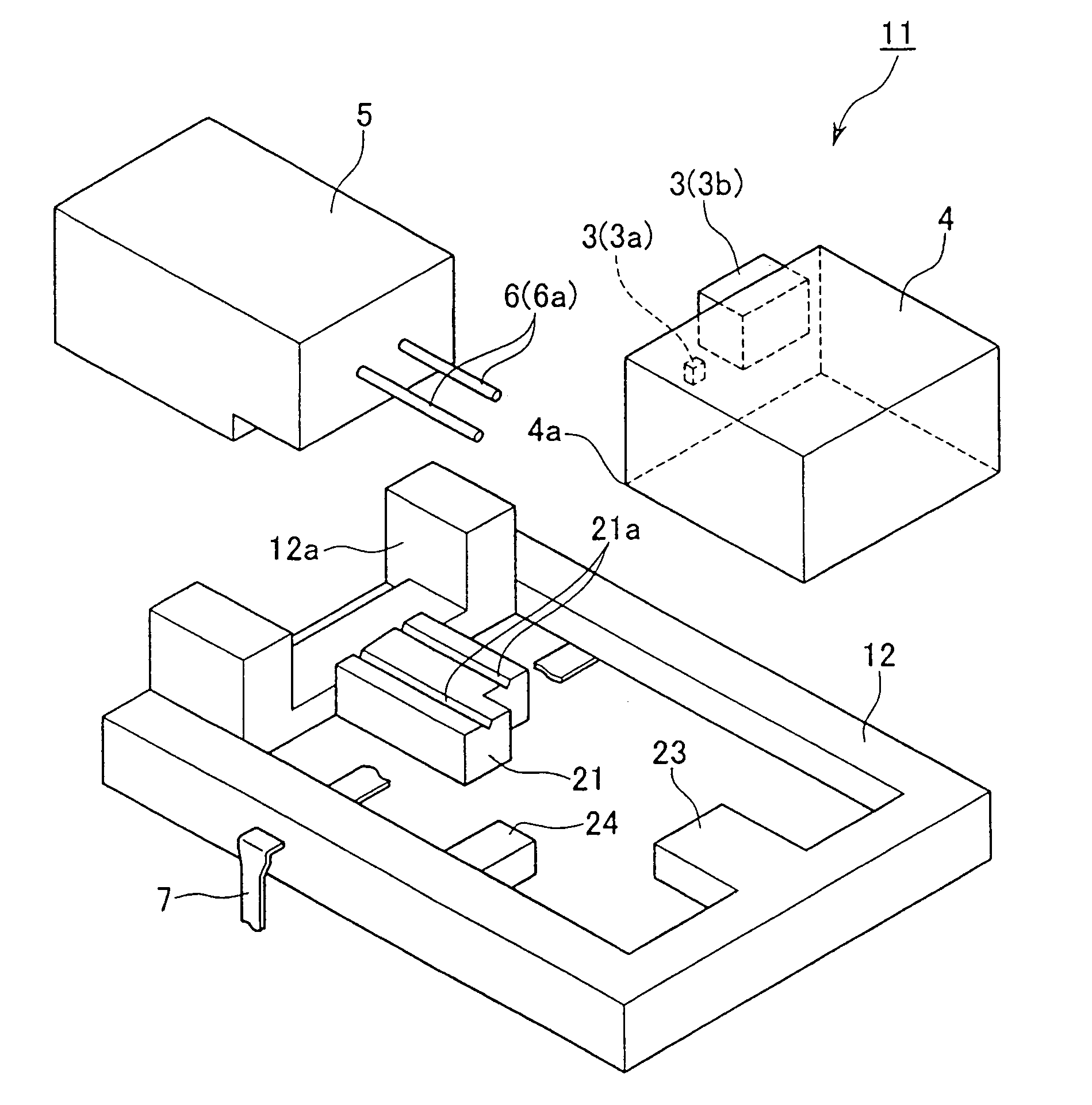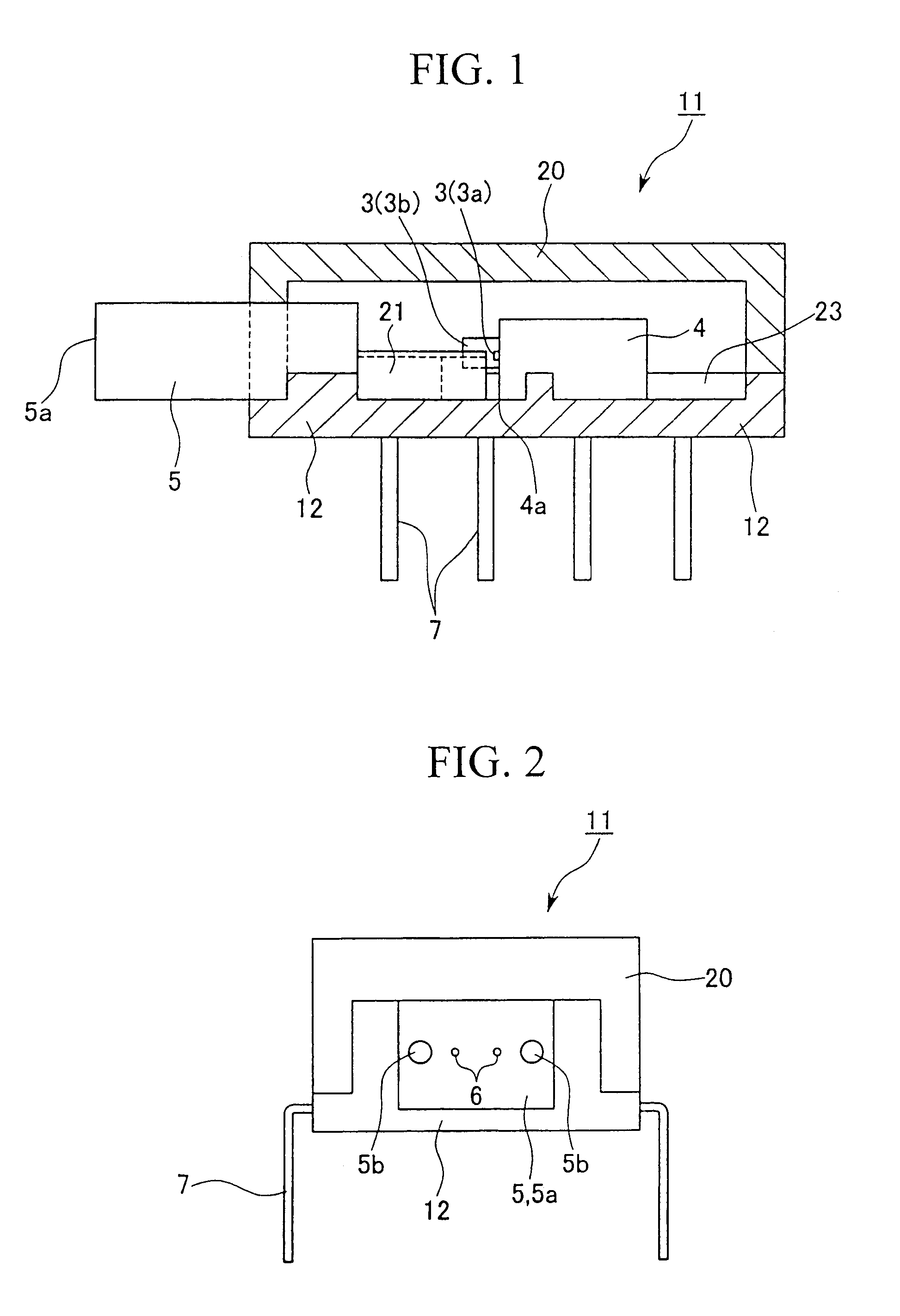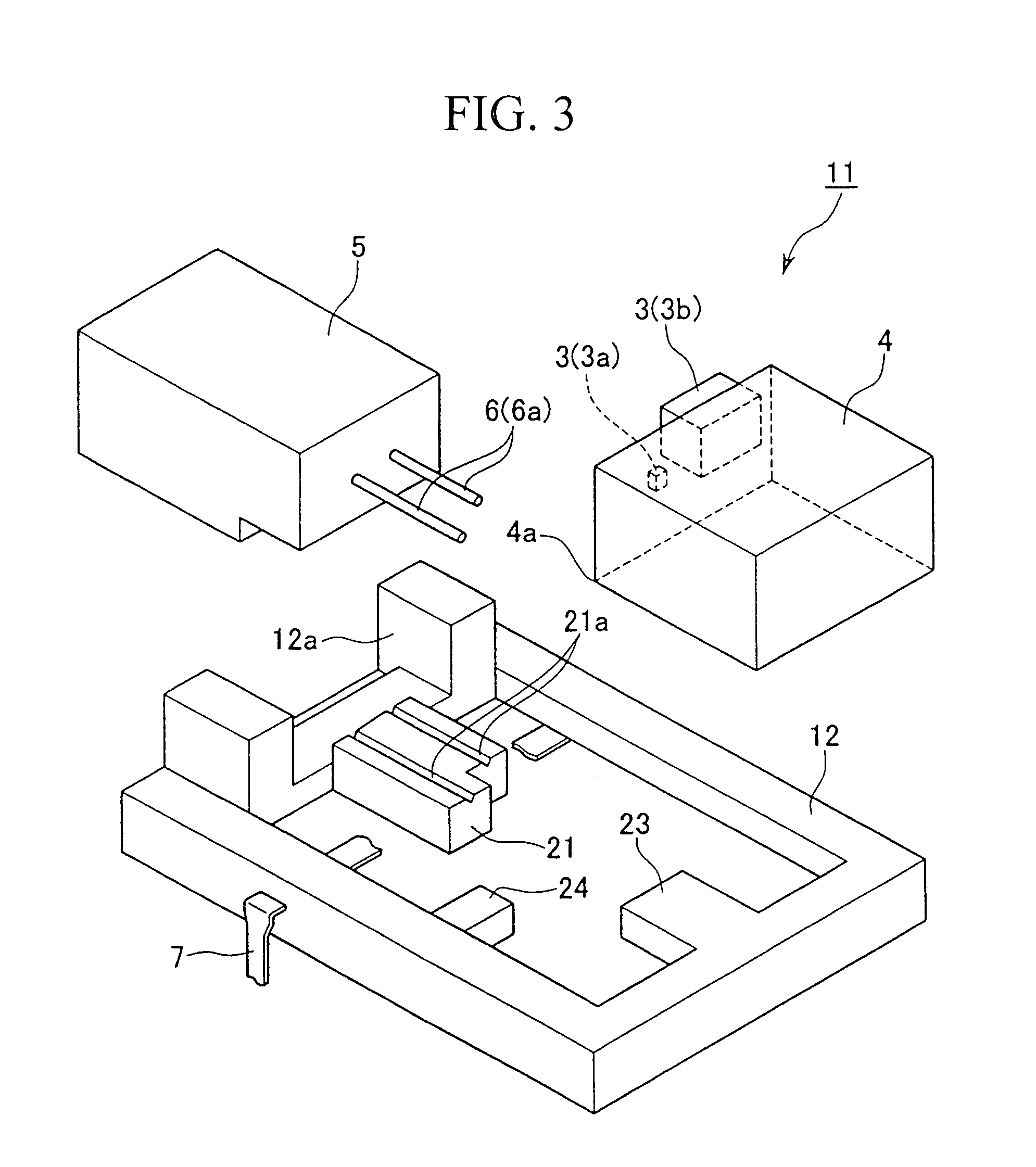Optical module, optical element attachment method, and receptacle-fitted optical module
a technology of optical modules and optical elements, applied in the field of optical modules, to achieve the effect of accurate position centering, high precision and easy acquisition of super precision
- Summary
- Abstract
- Description
- Claims
- Application Information
AI Technical Summary
Benefits of technology
Problems solved by technology
Method used
Image
Examples
first embodiment
[0060]Next, a first embodiment of this invention will be explained.
[0061]FIG. 1 is a cross-sectional view of an optical module 11 according to an embodiment of this invention, FIG. 2 is a left-side view of FIG. 1, FIG. 3 is an exploded perspective view of the optical module 11 of FIG. 1 without a cap, and FIG. 4 is a plan view of a package for optical module (hereinafter termed simply “package”) 12 in the optical module 11 of FIG. 1. As shown in these diagrams, the optical module 11 comprises a mount 4 of aluminium die casting and the like, which optical elements such as an LD (in particular, one using a face light-emitting-type semiconductor laser) 3a and a PD (photodiode) 3b are mounted on. The mount 4 is provided in a resin package 12. A ferrule 5 has a constitution resembling a two-filament MT connector, and is attached to the front section of the package 12 as an optical connector section and sealed with a cap 20.
[0062]Said ferrule 5 generally has a box-type outer shape achieve...
second embodiment
[0111]Next, a second embodiment of its will be explained with reference to FIGS. 15 to 18.
[0112]FIG. 15A is a plan view of an optical module 120 according to the second embodiment of this invention, FIG. 15B is a front view, and FIG. 15C is a view from the arrow A of FIG. 15B. FIG. 16 is a perspective view showing the internal structure of the package of the optical module 120 when the mount and the like is removed. FIG. 17 is a cross-sectional view showing a state when a pressing member 125 is provided on a positioning stand 122 of the optical module 120 of FIGS. 15A to 15C, and shows the vicinity of the light-emitting element 3a and the vicinity of the light-receiving element 3b.
[0113]As shown in FIGS. 15A, 15B, 15C, and 16, in this optical module 120, the positioning grooves 123a and 123b on the positioning stand 122 of the package 121, which contains the optical elements 3a and 3b, precisely aligns the position of the optical fibers 124a and 124b with respect to the optical ele...
third embodiment
[0143]Next, a third embodiment of this invention will be explained with reference to FIGS. 20A to 24B.
[0144]FIG. 20A is a plan view of an optical module 30 of this embodiment, FIG. 20B is a front view, and FIG. 20C is a view from the arrow B of FIG. 20B. FIG. 21 is a perspective view of the package internal structure when the mount and the like are removed from the optical module 30. FIG. 22A is a frontal cross-sectional view of the vicinity of optical fiber insertion holes 31 which are provided in the optical module 30 of FIGS. 20A to 20C, FIG. 22B is a cross-sectional view taken along the line C to C of FIG. 22A and shows the vicinity of the optical fiber insertion holes 31 in enlargement, and FIG. 22C is a frontal cross-sectional view of the vicinity of the optical fiber insertion holes 31. Incidentally, the mounts 28a to 28c provided in the package 33 are shown in FIG. 20A, but are omitted from the other diagrams.
[0145]As shown in FIG. 20B, the package 33 is sealed with a cap 20...
PUM
 Login to View More
Login to View More Abstract
Description
Claims
Application Information
 Login to View More
Login to View More - R&D
- Intellectual Property
- Life Sciences
- Materials
- Tech Scout
- Unparalleled Data Quality
- Higher Quality Content
- 60% Fewer Hallucinations
Browse by: Latest US Patents, China's latest patents, Technical Efficacy Thesaurus, Application Domain, Technology Topic, Popular Technical Reports.
© 2025 PatSnap. All rights reserved.Legal|Privacy policy|Modern Slavery Act Transparency Statement|Sitemap|About US| Contact US: help@patsnap.com



